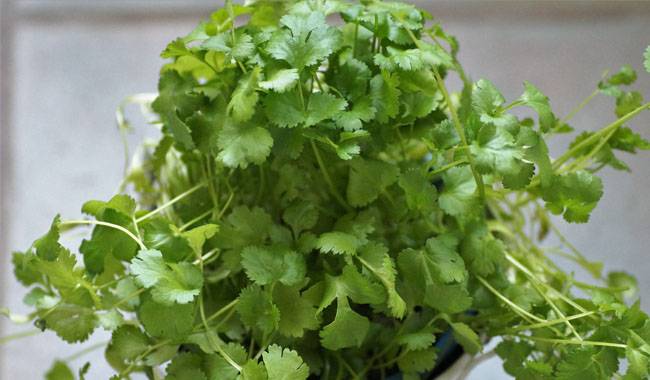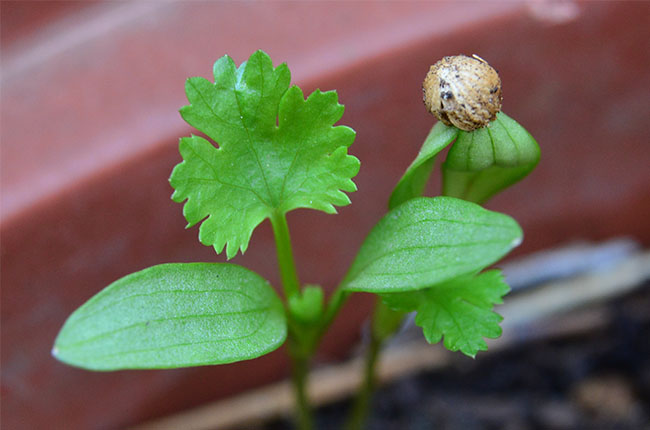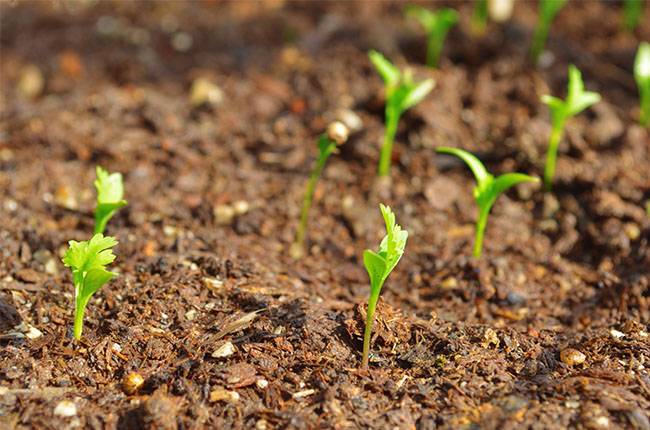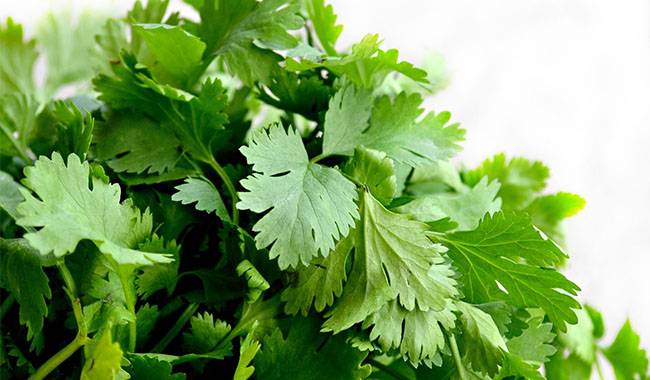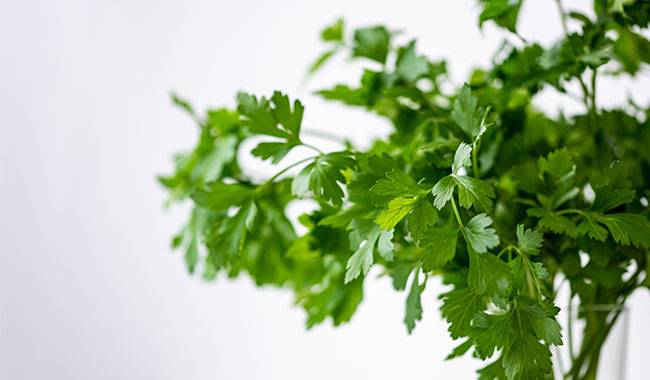
Coriander (Coriandrum sativum L) is a plant species of the Dicotyledon, Umbelliferae, Umbelliferae, and Coriander genus. Coriander is a one-year or two-year-old herbaceous plant. It is a familiar flavoring vegetable that resembles celery with small leaves Tender, slender stem, strong flavor, it is a condiment in soups and drinks. It is mostly used as a condiment for cold dishes, or as a hot sauce and noodle dishes.
Medicinal value: It can be used to appetite and relieve depression, and also relieve pain and detoxification. The Chinese “Compendium of Materia Medica” states that “coriander has a spicy, warm and fragrant nature, and the inner heart and the spleen are well developed.”
Coriander is also a green vegetable that everyone often eats, but when people eat this vegetable, they mainly eat the young leaves and stems of this plant. Not much is known about the mature seeds of this plant. In fact, cilantro except for the leaves In addition to its stems can be used for human consumption, its roots and seeds can also be used for human consumption, and have high edible value!
Appearance characteristics of coriander
Annuals or Perennials, an herb with a strong smell, 20-100 cm high. The root is fusiform, slender, with many slender roots.
The stem is cylindrical, upright, multi-branched, striated, and usually smooth. The root leaf has a stalk, and the stalk is 2-8 cm long.
The leaf blade has 1-2 leaves like pinnately lobed, the pinna is broadly ovate or fan-shaped, 1-2 cm long, 1-1.5 cm wide, with blunt serrations, nicks, or deep lobes on the edge, and the upper stem leaves. It splits in 3 times or at most times, with narrow linear lobes at the end, 5-10 mm long and 0.5-1 mm wide.
The umbels are terminal or opposite to the leaves, and the peduncle is 2-8 cm long. The leaves are 3-7 cm long after opening and 1-2.5 cm long.
Small involucre of coriander 2-5, linear appearance. Small umbels have white or light purple.
Calyx teeth usually vary in size, small ovate triangular, large long ovate.
The petals are obovate, 1-1.2 mm long and 1 mm wide, with a concave tongue at the top. The radiating petals are 2-3.5 mm long and 1-2 mm wide, usually whole, with 3-5 veins. The filaments are 1-2 mm long, and the anthers are ovoid, about 0.7 mm long; the styles are erect when they are young.
When the fruit is ripe, it curves outwards. The fruit is round and the main edge on the back and the adjacent second edge are obvious.
The ventral surface of the endosperm is concave, or one is located below the secondary ridge. Flower and fruit period from April to November.
The growth environment of coriander
Coriander can tolerate low temperatures from -1°C to 2°C, and the suitable growth temperature is 17°C to 20°C. It grows slowly when it exceeds 20°C, and stops growing at 30°C.
Coriander does not have strict requirements on the soil, but the soil with good soil structure, strong fertilizer, and water retention performance, and high organic matter content is beneficial to the growth of coriander.
The origin of coriander
The place of origin is the Mediterranean coast and Central Asia, and it is now grown in most areas.
The main value of coriander
Medicinal value
Coriander is warm in nature and pungent in taste. It has the effects of diaphoresis and rash, dissipates food and qi, awakens the spleen, and invigorates the spleen. It is mainly used to treat symptoms such as poor bleeding in the early stage of measles, food stagnation, loss of appetite, and rectal prolapse.
Coriander spicy fragrance can promote gastrointestinal peristalsis, help appetite and wake up the spleen, and reconcile the middle burn;
Coriander extract has a remarkable function of sweating, clearing away heat and rash, and its special fragrance can stimulate the secretion of sweat glands and promote the body to sweat and rash.
The medicinal part of Coriander: Coriander is used as medicine in the whole plant and mature fruit. The whole coriander can be picked in spring and summer, cut into sections, and dried. In summer, the fruits are picked, impurities removed, and dried.
Coriander production method: fresh or washed, dried, and chopped.
Coriander functions and indications: it can cure rash and invigorate the stomach.
The whole plant of coriander can cure measles and colds; the fruit of coriander can cure indigestion and loss of appetite.
Nutrition
Coriander is rich in nutrition and contains vitamin C, carotene, vitamin B1, B2, etc.;
At the same time, it also contains rich minerals, such as calcium, iron, phosphorus, magnesium, etc. The volatile oil contains mannitol, n-coniferous, nonanal, and linalool, etc., which can appetite and refresh the spleen. Coriander also contains potassium malate.
The amount of vitamin C contained in coriander is much higher than that of ordinary vegetables. The average person can meet the human body’s demand for vitamin C by eating 7-10 grams of coriander leaves;
The carotene contained in cilantro is more than 10 times higher than tomatoes, beans, cucumbers, etc.
Nutritional analysis
Coriander contains many volatile oils, and its special aroma is emitted by the volatile oils.
It can get rid of the fishy smell of meat, so adding some coriander to some dishes can have the unique effect of removing the fishy smell and enhancing taste.
Coriander extract has a significant function of sweating, clearing away heat and rash, and its special fragrance can stimulate sweat gland secretion and promote the body to sweat and rash.
It also has the effect of regulating the stomach, because the coriander pungent fragrance rises and looses, can promote gastrointestinal peristalsis, and has the effect of appetizing and refreshing the spleen.
Coriander calories
The calories per 100 grams of coriander are 31 calories, which is very low.
Coriander is fewer pests due to its pungent odor. It generally does not need to be sprayed with pesticides and is close to organic food. It is very suitable for raw food, tea making, and cooking.
Freshly consuming coriander can help improve metabolism and help lose weight and beauty. It is now popular in Japan to use coriander to make tea, and it is believed that coriander tea is more effective than lemon tea and mint tea.
The benefits of coriander
In fact, the reason why cilantro has a relatively unpleasant taste is mainly that it contains more than 40 chemical substances, and more than 80% are aldehydes, so it exudes an unpleasant taste.
In fact, many people do not particularly understand its edible benefits except for the extreme rejection of its taste. When they know these functions of coriander, many people should have a big change in it.
Lower cholesterol.
We all know that general vegetables contain relatively high vitamin C, but cilantro is much higher than its content. Normally, only about 10g of cilantro can satisfy an adult’s demand for this element.
It is well known that vitamin C can help people lower cholesterol, and it can also effectively prevent arteriosclerosis and other problems.
Help digestion.
In fact, the special scent contained in coriander is mainly because it contains some volatile scents, which can not only remove fishy mutton but also promote the secretion of saliva, which can also help the effect of gastrointestinal movement.
Prevent colds.
Coriander is very rich in trace elements and vitamins. Not only that, but it also contains carotene. It should be known that its content is even far greater than that of tomatoes, so it is very easy to see its nutritional value.
For people who love to eat cilantro, it can often effectively improve their immunity, and at the same time, the ability to fight disease will also increase significantly.
Promote blood circulation
Coriander also has the effect of promoting peripheral blood circulation. For those who are prone to cold, eating coriander can also improve the symptoms of cold hands and feet.
Enhance memory
Coriander is suitable for forgetfulness and memory loss.
Remove fishy smell
The scent of coriander can remove the fishy smell of meat, so adding some coriander to some dishes can have the unique effect of removing the fishy smell and enhancing the taste. Adding coriander to the clear soup can increase the fragrance of the soup; adding coriander when mixing cold dishes can enhance the flavor.
Even for those who are not biased against coriander, in fact, sometimes they can try to feel the charm of coriander, which may not be as unpalatable as you think.




